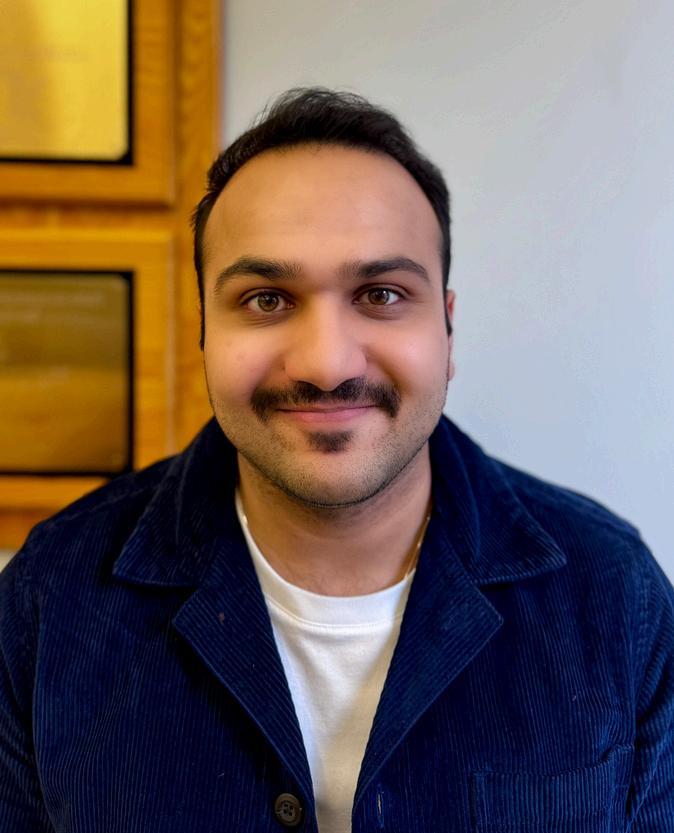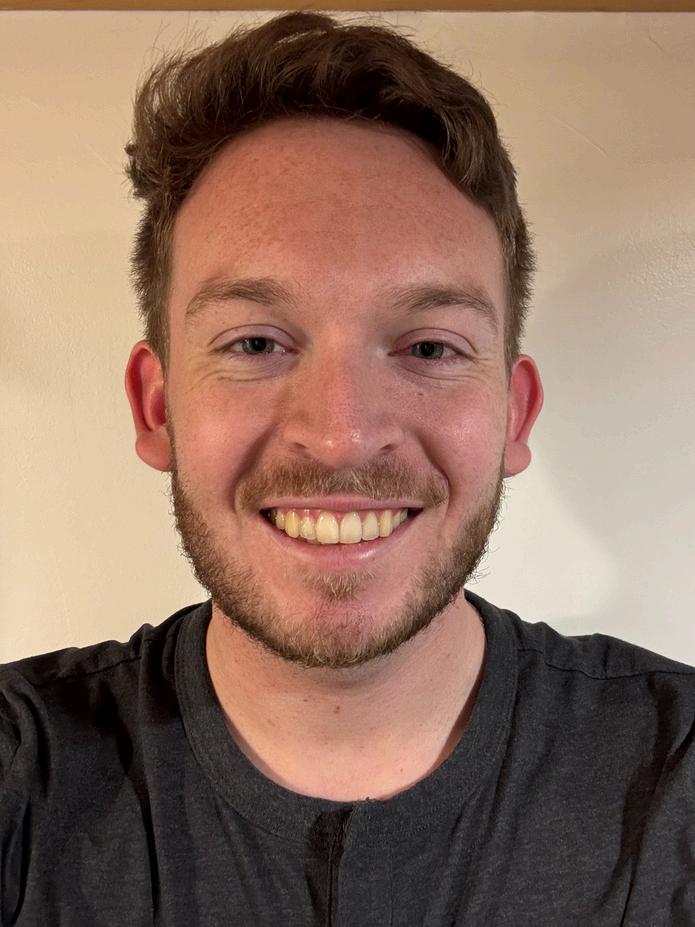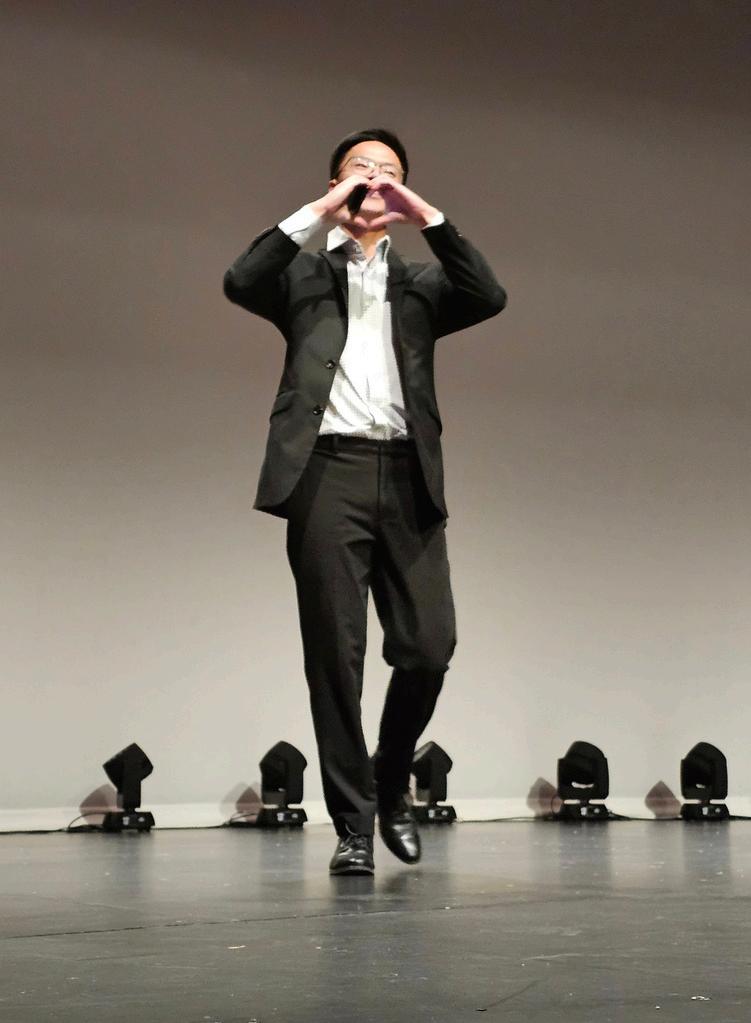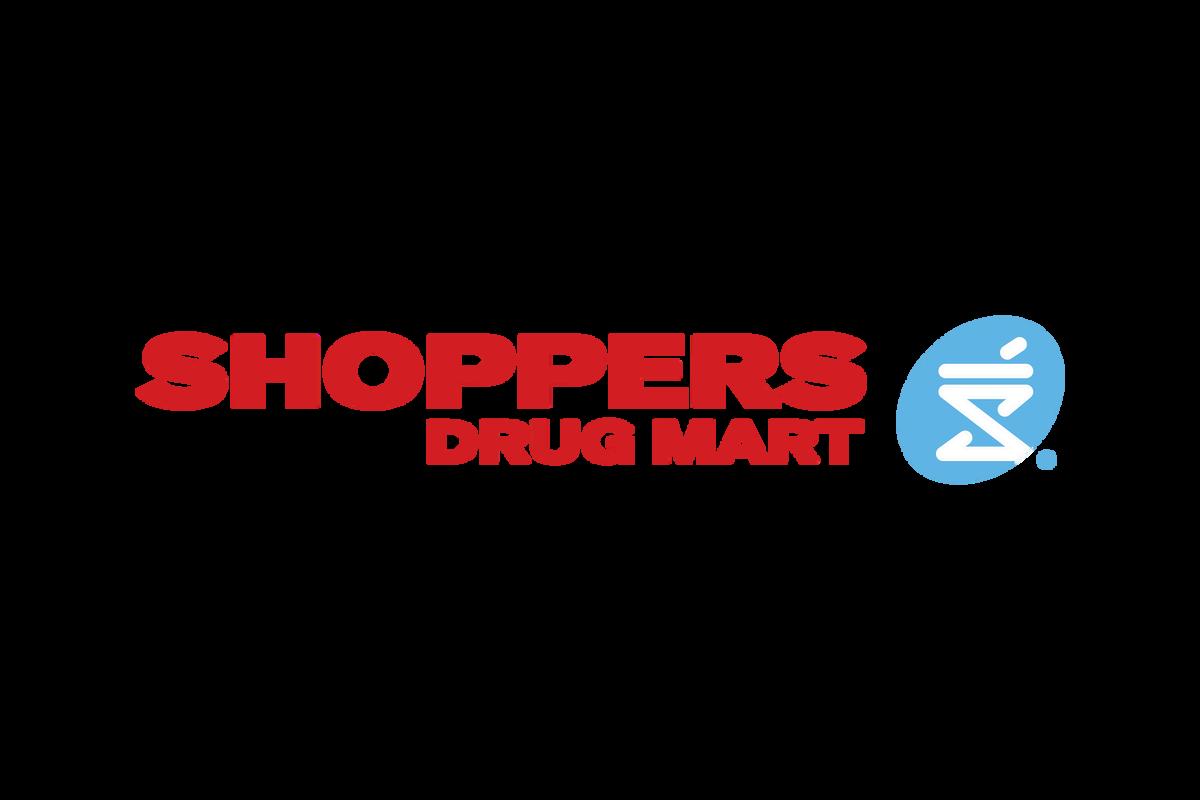











Hey everyone! I’m Joana from the Class of 2028! I graduated with my Bachelor of Science in Biochemistry from the UofA, so I’ve been here for a while. Lots of my time is spent overthinking pharmaceutical calculations and trying (and failing) to find a study spot in the library When I’m not doing either of those things, I love reading, drawing, and gaming on Stardew Valley. I hope everyone has a wonderful year, and good luck with finals!


Hello! My name is Abdiel Castillo from the Class of 2028, so expect to see me around for a while! Before pharmacy, I did my undergrad in Honours Immunology and Infection at the UofA, and have been doing research projects in KATZ since 2022. Surprisingly, I do have free time and like to spend it making music, playing volleyball, and gaming on Call of Duty Black Ops 6. If you see me by the Med Sci halls (or at the foosball table at APSA lounge), feel free to say hi! Have a great year everyone
By: Joshua Litke
A blue sky and warm September morning welcomed 39 participants back to Corbett Field once again for the annual softball tournament, Saving Second Base. APSA raises money for the Canadian Cancer Society by organizing Saving Second Base and entering a team in the CIBC Run for the Cure. This year, the U of A Pharmacy team raised $2300 for Run for the Cure, and $645 with Saving Second Base.
Four teams competed for the trophy, which are as follows: the Rad Soxs, captained by Jayden Johannson; the Slide-Effects, captained by Keagan Prusak; the Steroid Sluggers, captained by Max Albrecht (right); and the Beta-Bunters captained by Joshua Litke.


Ultimately, it came down to the SlideEffects and the Steroid Sluggers, with
trophy for the champions to hoist, which the Slide-Effects (left) raised high (not pictured). the Slide-Effects coming out on top and claiming the title. New for this year was a
A huge thanks goes out to the sports reps and organizers, Sarah McClelland and Bruce Wilson.
Wilson commented: “The event was an incredible success! We had an amazing turnout, and thanks to so many willing hands, everything ran seamlessly. I can’t wait to participate again next year!”
Writtenby:RemiHouandOmniaRajab

Since 1993, Meiji Pharmaceutical University (MPU) in Tokyo, Japan, has partnered with the University of Alberta to send Japanese pharmacy students on a two-month trip to Edmonton. The students learn about the differences in pharmacy practice between Japan and Canada as well as explore the culture of Canada. This year, after an almost 15-year hiatus, Toho University’s Faculty of Pharmaceutical Sciences (TU) in Funabashi, Japan joined MPU in sending students on a three week exchange to the UofA. At the end of their exchange, twelve students from both MPU and TU gave presentations on what they learned about pharmacy practice in Canada.
Hanae and Saki shadowed the Kaye Edmonton Clinic Outpatient Pharmacy which manages many patients living with Human Immunodeficiency Virus (HIV). They highlighted some of the differences in HIV management, most notably the increased social stigma towards HIV in Japan compared to Canada. While Alberta has programs that can cover the cost of HIV medications, patients in Japan still need to pay a substantial copay in order to receive treatment.

The difference in pharmacists’ scope of practice in Japan and Canada caught the attention of Tomokazu and Fumino. Pharmacists in Japan are unable to prescribe medications, diagnose conditions, send lab requisitions or administer injections to patients. These tasks are left to Japanese physicians, who are much easier to access than doctors in Canada. Tomokazu and Fumino noticed that Canadian pharmacists have an expanded scope of practice, and can provide primary care to compensate for the increased patient demand on physicians. After reflecting on these differences, they noticed how it is often harder to see doctors in Canada so pharmacists can provide primary care and thus need an expanded scope of practice.
During their stay in Canada, Sayo and Marina learned about the difference in the education required to become a pharmacist. Students in Japan enter pharmacy school straight out of high school, complete six years of school and write a national board exam before becoming certified pharmacists. They also fulfil two 11-week rotations under the careful supervision of a practicing pharmacist, who double checks everything the student does. In Alberta, fourth year pharmacy students complete four 8week rotations, coming up with their own plan for their patients which is then finalized by a practicing pharmacist.
Kaho and Moe took a special interest in ADHD treatment and discussed how they have never seen patients in Japan who take ADHD medication, despite its prevalence in Canadian and Japanese children are almost identical. In addition to their discoveries about ADHD medication in Canada, Kaho and Moe were also interested in the typhoid vaccine in Canada. The oral typhoid vaccine Vivotif is not approved for use in Japan as of yet, and the injectable vaccine, which was recently approved for use in June 2024, is only given at travel clinics and doctors offices in Japan.
Hinano and Akari showcased the differences between support staff in pharmacies across Japan. In Canada, pharmacy technicians are a valuable resource in both hospital and community pharmacies, and arrive with extensive education and national certification on pharmacy practice. However, pharmacists in Japan operate alone or with pharmacy assistants, who do not require specific qualifications to work in a pharmacy. Pharmacy technicians are not a recognized profession in Japan, and the pharmacy assistants who do work in pharmacies only assist with filling prescriptions.
Kensuke and Yuki focused their research on the utilization of electronic health record systems in Canada, and compared it to the record keeping system currently in place in Japan. In Alberta, pharmacists and other healthcare practitioners have the opportunity to review information on patients on a centralized database (NetCare), whereas in Japan, the responsibility of record keeping falls to the patient themselves who need to bring their records to each visit. Pharmacists then have the chance to check for interactions and look for allergies, but it is ultimately up to the patient to use their own personal health system accordingly.
BY: SANIA JAVAID
In 2006, pharmacy alumni Aileen Jang hosted the first Independent Pharmacy Night Her goal was to bring together independent pharmacy owners from across the province to share their experiences and opportunities with students. Almost 2 decades later, the event has grown from first having 40 students in attendance to 150 students attending Independent Pharmacy Night 2024. As cornerstones in rural and urban communities, independent pharmacies are a reminder of the importance of patient-centered care. Independent Pharmacy Night stands as an event highlighting the achievements and experiences of independent pharmacies and connects students to potential employers in a meaningful way
Here’s a highlight of what happened at Independent Night 2024 plus some thoughts from students!

“ITSEEMSMUCHMOREPATIENTCENTERED ANDYOUSEEMTOBEABLETOSPEND MORETIMEWITHEACHPATIENT.”

“THE HOST WAS REALLY ENGAGING AND NICE, AND IT SEEMS LIKE YOU CAN MAKE MORE PATIENT CONNECTIONS.”

“ILIKETHEFLEXIBILITYANDHOWUNIQUE EACHPRACTICEISNOTATTHISTIME.”
“SEEMSLIKETHEREISANEEDFORMORE PSPECIALIZEDSERVICESTHATPRIORITIZETHE ATIENTCAREPROCESSWHICHINDEPENDENT PHARMACIESAREBETTERPOSITIONEDTO ADDRESS.”
A“IFEELIWILLBEABLETOLEARNMORE BOUTTHETHOUGHTPROCESSOFTHE PPHARMACISTSRATHERTHANTHE ROCEDURESSETBYCORPORATE.”


“ALLOWS FOR MORE INDIVIDUALIZED PROFESSIONAL PRACTICE WHERE PHARMACISTS HAVE SPACE TO GROW IN THEIR OWN WAYS, WHICH IS REALLY APPEALING TO ME.”
Our main presenter was Tony Nickonchuk, who is a pharmacist working at AHS Peace River and is involved in the Drug Utilization program. Tony explained the advantages of having this program in place, and what the role of a pharmacist in this program entails, and shared some interesting hidden facts about drug manufacturing companies.
The primary goal of this Drug Utilization Stewardship Program is to ensure patients are receiving evidence-based cost-effective care that prioritizes the patients' safety and well-being. Advantages include:
Improving cost-effectiveness
Reducing confusion among various healthcare providers
Reducing drug selection errors which enhances patient safety
Lowering inappropriate medication usage
Pharmacists in this field can start small research projects and create useful tools for other pharmacists. These tools help healthcare providers manage medications, especially during shortages. Tony shared his experiences during the COVID-19 pandemic, explaining how he worked with the government to create new drug policies and find alternatives when there were medication shortages
Tony talked about a practice called Evergreening used by drug companies. Evergreening involves making small changes to existing medications to extend their patents For example, Celexa (Citalopram) was modified to become Cipralex (Escitalopram). Although this might sound beneficial, it was noted that these minor changes don’t significantly improve patients' health. Thus, companies can keep their patents longer and make more money, often at the expense of patients' well-being This raises the these practices benefit patients or just the companies. Tony suggested, “Assume a drug does nothing until proven otherwi Additionally, it’s important for pharmacists to understand Evergreening so they can better advise their patients on which medications truly support their health goals.
Books including "Bad Pharma" and "Bad Science" by Ben Goldacre can highlight the dangerous impacts that drug companies can have on patient safety.

Written by: Marissa Mikhail
ThiseventisproudlypresentedbyCSHPeachyeartohelppharmacystudentsbetter gainanunderstandingofhospitalpractice.Pharmacistsinattendanceincluded:
Cassandra who previously practiced in the Internal Medicine unit and has recentlytransitionedintoapharmacymanagerialposition.
KurtpracticesinMentalHealthandAddictions(Psychiatry).
Marcel practices in the Inpatient Pediatric Oncology unit and now manages provincialpharmacyservicesformanyhospitals.
Pawan practiced in the Family and Internal Medicine unit, COVID unit, Virtual Hospital,andPulmonaryunit,buthastransitionedtotheUofAFacultytoaidwith teachingstudents.
Rupam practices in the Adult Inpatient Nephrology unit and educates students aboutCKD
This diversity in experiences can inspire pharmacy students that caring for patients can occur in many domains. There is no straight path to success, so it should be individualizedtoeachperson’spassion.Nevercompareyourjourneywithyourpeers’ because you can lose focus on your own path. Despite how overwhelming all the differentspecialtiescanbeandtheconsiderationofpursuingdifferentroutes,tryto experiment and see what interests you the most, and seek guidance when needed. Some pharmacists recommended the Hospital Residency program as this experiencecanexposeyoutomanydifferentfieldsthatpharmacistspracticein.
A major takeaway was the importance of learning how to communicate your thoughtsandexplaindifficultconceptstopatients Apharmacistemphasizedthisby sayingthatratherthanlearningallthematerialwordbyword,taketimetodevelop your skills of explaining these important things to patients. Clear and simple communication can empower patients to understand their medical conditions and take action for their health. Some pharmacists further touched on how you can participate in this by trying different methods during skills lab, which is a piece of adviceIwilltakeforupcominglabsThanksforreading!
WrittenBy:MarissaMikhail























The marvelous moustaches you see here mo’d all month and made money for the Movember Foundation. $2365 was raised in the moustache competition alone, with other efforts like ‘Pie in the Face,’ ‘Messy Rx,’ and ‘RxFactor’ bringing APSA’s total raised to $3000. Organizer and VP External Rebecca Johnston commented “the Movember Moustache Competition was a fantastic success, becoming one of our most significant fundraisers in terms of donations! This friendly competition brought people together and created a platform for participants to share what Movember means to them, fostering a deeper connection to the cause. Thanks to everyone's enthusiasm and generosity, we made a great impact on men’s health initiativ




















SPONSORED BY





From monkeying around to a swimsuit competition, Joshua (Class of 2027) got laughs and cheers as he paid homage to Mr Pharmacy, APSA’s old Movember campaign! He claimed his talent was procrastination, but if that’s so, maybe we should do more of that! Joshua was so impressive he wasvotedaudiencefavourite!

RxFactor started off with a performance by Miguel from the class of 2026 who wowed the audience on the piano and synthesizer! He performed a foursong compilation was “Isn’t She Lovely,” “I Just Called to Say I Love You,” “Superstitious” and “All.” A strongstarttoRxFactor2024.






Flexing both his bilingualism and singing abilities, Andrew (Class of 2028) really left the crowd speechless! He started with his rendition of the Korean song “그때 그 아인” before channeling his inner Freddie Mercury with an outstanding performance of “Bohemian Rhapsody!”

ActIV-NaomiLee
We’ve found a new parody queen in Naomi from the class of 2025! She parodied “Tik Tok” by Kesha, “We Didn’t Start the Fire” by Billy Joel and “Style” by Taylor Swift Naomi Truly impressedtheaudiencewithbothher singing abilities and her creativity. Definitely inspired us to put on our “WhiteCoatStyle!”






ActVI-HeidiBuhler
With a wicked performance truly defying gravity, Heidi (Class of 2027) embodied the character of Glinda from “Wicked” She sang “Popular” and then, with a quick costume change, wowed the audience with “Defying Gravity.” Cameo from her friend Omnia (Class of 2027) who playedElphaba!

ActV-GoodwinChau
Goodwin from the class of 2025 inspired the audience with his comedy skit about preparing for a talent show! As the protagonist brainstormed ideas, he reflected on his journey to pharmacy and the memories he formed As a message to the audience, you are doing exactlywhatyouaresupposedto!




ActVIII-PharmDDR

Pharm Dance Dance Revolution (PharmDDR) is made up of Allison Wan,JinHe,KevinTaandMinjiKang, all class of 2026. The audience was awestruck by their choreography as they danced to a mash-up of some of our favourite K-pop artists, including BTS, BLACKPINK and Red Velvet


With a mix of comedy and music, Ryan from the class of 2028 performed two comedic songs from Bo Burnham He started with “Left Brain Right Brain” and then followed it up with “Sad” Ryan made the audience ponder the differences between the left and right brain and broughtsomehumourtosadevents.






ActIX-MohamedAlsawari
AsthecurtainsofRxFactor2024were abouttoclose,asurprisecontestant, Mohamed (Class of 2025), came to the stage with his guitar and voice! He performed “Clay Pigeons” by Glaze Foley and “Rockstar” by Nickelback.Heinvitedhisclassmates Carson, Fanni and Ahmed to sing withhim

AndtheWinneris...
PharmDDR! With their spectacular performance, this year’s RxFactor winners are PharmDDR. They will be heading to Halifax in January to perform at 2025's Professional Development Week alongside talent from other pharmacy schools acrossthecountry!Congratulations!





DESIGNED BY ABDIEL CASTILLO
“Our lab’s research focuses on three primary areas to advance treatment and prevention in heart disease and cancer.”
#1: We investigate Cytochrome P450 enzymes' role in cardiac hypertrophy (abnormal heart enlargement) which can lead to heart failure. By understanding these pathways, we aim to develop therapies that prevent or slow heart failure, improving quality of life and reducing healthcare costs. We are also testing compounds that regulate these enzymes to support heart health.
#2: We study interactions between environmental heavy metals and aryl hydrocarbon receptor (AhR) ligands, which may alter gene activity and increase cancer risks. This research could guide new strategies to reduce cancer risks linked to environmental exposure
#3: We explore natural compounds that inhibit cancerassociated AhR receptors to develop safer, more effective cancer therapies. Conventional cancer treatments often carry severe side effects, so we aim to provide alternative options that promote health with fewer risks.

“Together, these research areas address critical health issues by offering innovative, science-driven solutions to prevent heart failure and cancer progression. Our work seeks to contribute impactful, real-world health benefits, advancing public health through targeted treatments and prevention strategies.”

Dr. Mark Makowsky’s research focuses on the development and evaluation of evidence-based tools, including eHealth interventions, to improve medication use, patient outcomes, and pharmacist practice in primary care. With the broad scope of pharmacy practice in Alberta, his research addresses how pharmacists can deliver coordinated care to improve access to primary healthcare services.
Currently, he is working with an interdisciplinary team of researchers (a family physician, an emergency physician, and infectious disease specialists) on a project studying the management of acute respiratory infections in community pharmacy clinics This work, as well as several other projects led by health researchers at the University of Alberta, is funded by a generous grant from Shoppers Drug Mart to the Faculty of Pharmacy and Pharmaceutical Sciences
Dr Makowsky has focused on the use of point-of-care tests for strep throat, COVID, and influenza by pharmacists in community pharmacies Along with his graduate student, Mr Omar Abdellatife, he recently published a scoping review that examines factors influencing the implementation of these tests, using the Consolidated Framework for Implementation Research Their review highlights key factors such as meeting patient needs, collaboration with physicians, and reimbursement for services. In early 2024, Dr. Makowsky surveyed community pharmacists in Alberta to assess their practices and attitudes toward providing test-and-treat services for respiratory infections, with results expected to be published in 2025.
Dr. Makowsky has also done research on other topics, including:
The influence of electronic medication administration records and barcode technology on medication errors in long-term care facilities
Assessing the quality of blood pressure tracking apps
Addressing the need to tailor digital health resources for patients of different cultural backgrounds.

These are a few of the many studies he does to encourage healthcare providers to improve their standards of care and help patients achieve better overall health.
The Neurotherapeutics and Clinical Pharmacokinetics (Neuro-CPK) Lab, led by Dr. Sherif Mahmoud, focuses on improving treatments for neurological disorders, particularly in neurocritical care and epilepsy. Using basic and clinical research, the lab studies how neurological injuries affect drug behaviour and investigates drug-related challenges in neurological conditions. The goal is to develop personalized, effective, and safe therapies to enhance patient outcomes.
Using individualized dosing to optimize pharmacotherapy for aneurysmal subarachnoid hemorrhage (a life-threatening stroke/brain bleed). This condition is associated with a significant variability in treatment efficacy. This variability is particularly pronounced with nimodipine, the only drug proven to improve outcomes in these patients.

Understanding augmented renal clearance (ARC - increased clearance of drugs through urine) in neurocritical care. ARC, often overlooked, can lead to subtherapeutic drug levels and treatment failure in patients with severe neurological conditions. Research here aims to identify ARC prevalence, risk factors, and its clinical impact to guide improved dosing strategies.
Epilepsy management. This is especially important for patients with comorbidities (or many diseases) that complicate treatment. Research seeks to enhance anti-seizure medications efficacy while minimizing side effects, improving quality of life for this population.
Dr. Mahmoud’s work contributed to clinical practice changes locally and globally. He led a practice changing multicenter study involving more than 700 patients in collaboration with 20 centers across North America that was highlighted in Folio news In addition, he had several published guides that are currently utilized by clinicians such as drug dosing in patients undergoing therapeutic plasma exchange, managing patients with epilepsy and renal impairment, anti-seizure medication dosing in patients undergoing renal replacement therapies and many more
Through these projects, the Neuro-CPK Lab addresses significant gaps in clinical pharmacotherapy, aiming for practical, patient-centered innovations in neurological care.

“So is it just journaling or do you guys also scrapbook?” was one of the first questions a first year ever asked me when I was trying to promote PUJC. To a lot of students, the idea of a journal club is pretty foreign. This article hopefully will help clear up any confusions.

A journal club is a regular meeting where individuals gather together to critically evaluate academic or scientific literature This is a common practice done in research and among practicing clinicians to stay updated on the constantly-evolving flow of research and to develop the critical appraisal skills needed to facilitate sound decision making Journal clubs are incorporated into courses, grand rounds, or within research institutes/departments. The purpose of the Pharmacy Undergraduate Journal Club is to start exposing pharmacy students to new topics and begin developing those important skills in critical thinking and discussion early on.
During a PUJC session, pharmacy students have the opportunity to check out the latest and greatest research applicable to pharmacy science and practice As pharmacy is very interdisciplinary, there are many different topics that can be covered During PUJC, a volunteer presenter chooses a particular topic to focus on and finds an article or articles of interest to present on The presentation consists of an introduction to the topic, a rationale for picking the topic, a brief overview of the article(s), and an appraisal of the article In this appraisal, the presenter has a chance to talk about their thoughts and feelings about the article: is the article an important piece of the clinical puzzle or nothing special?... More importantly, the audience is encouraged to contribute their own thoughts and opinions to the appraisal, which makes journal clubs very different from traditional lectures.
What happens during PUJC?
Why should I attend a journal club like PUJC?
I think the most important reason for attending journal club is to develop the critical appraisal skills needed to be a good pharmacist Originally, PUJC was created for pharmacy students who were wanting to enter in hospital residency However, as all pharmacists enter more clinical roles, a better understanding of literature and how to navigate the flood of research that occurs on a daily basis is needed Just accepting study results is not enough. PUJC helps students develop an understanding of the limitations to research and how to apply literature to patients and practice. Research not only impacts patients, it also helps dictate the services and environments pharmacists work in. Therefore, it is important to appraise pharmacy practice research as well.
Incorporating Indigenous medicine into diabetes care
New roles for pharmacy technicians
Providing gender-affirming care in community pharmacies
How antibiotics are being prescribed and dispensed in the community
Race consciousness in healthcare
What are pharmacists being trained in mental health
What factors influence well-being in community pharmacists?
Do pharmacy students share characteristics across the globe?
New pharmaceutical innovations
How do I get involved?
What research topics have been discussed in the past?
Attending PUJC is the first step I make PUJC very informal and relaxed so that newcomers are always welcome Even if you can’t attend, reading the articles helps increase your own understanding of the research occurring around you If you wish to present, please email me at vchiang@ualberta ca and I can help provide guidance!



Pharmacy Students for Mental Health is a student group with the goal of empowering pharmacy students to be able to provide mental health support for themselves, their peers, and their patients. We want to promote the important role that pharmacists play as providers for mental health care, and contribute to destigmatizing conversations around mental health. If you’re interested in event planning, leadership, and have a passion for mental health, we’d love to have you on our team. Please email us at pharmstudents4mentalhealth@gmail.com!
The Muslim Pharmacy Students’ Club (MPSC) is a student group led by Muslim pharmacy students to support Muslim needs and representation! We are dedicated to educating healthcare professionals on the unique health needs of Muslim patients, and advocate for the wellness needs of Muslim pharmacy students and pharmacists. We hope to develop a welcoming space, and a rich community of Muslim pharmacy students, professionals, and faculty members by creating meaningful relationships that will live on throughout our careers. If you would like to reach out, our email is mpsc.uofa@gmail.com, and follow our ig @mpsc.uofa for updates!




Joana
Cruz 9:57 AM 10:44 AM 12:02 PM 2:15 PM 3:16 PM 4:00 PM
same time tomorrow?





REBECCA JOHNSTON
CLASS OF 2027
Rebecca loves this dress because it’s “business casual but comfortable”. How you feel in your outfit is just as important as how you look!
SHIRLEY ZHOU & MAKENNA LARSON
CLASS OF 2028
“Unintentional twinning” gone right! Makenna and Shirley bring the fun to fashion

PHAN CLASS OF 2026
For many pharmacy students, patient care skills lab is their first encounter with the term “business casual”. The way you dress as a student pharmacist is an important aspect of your growing professional identity. But what does “business casual” even mean? What does it look like?
Here’s how some students dress to impress

Another big fan of “business but comfy”, Sarah elevates her outfit with a floral skirt
Of course not! Dress expectations will vary from pharmacy to pharmacy. “Business casual” is the guideline we follow, but there is still plenty of room for self expression
Whether you go for a button-down and tie, turtleneck, dress slacks or khakis, it all boils down to internalizing your role as a leader and professional Your attire is a part of your first impression with patients, their families, and colleagues It is important to communicate confidence and reliability.
BY: REMI HOU
TRY TO GUESS WHAT DRUG EACH SEQUENCE OF EMOJIS IS MEANT TO REPRESENT. HINTS ARE FOUND UNDER EACH SEQUENCE. THE FIRST ONE IS DONE FOR YOU. GOOD LUCK!

ANS:Penicillin(pen-a-sailing)

Hint:apainkiller

Hint:anantihyperglycemic

Hint:antihypertensivethatcancauseacutekidneyinjury

Hint:abiologicforrheumatoidarthritis

Hint:anantimetabolite

Hint:antibioticyoushouldnottakewithcalcium

Hint:antibioticforC.diff

Hint:cardiacmedicationderivedfromaplant

Hint:antiviralforcoldsores

Hint:antihypertensivethatblocksRAAS

Hint:injectablesupplement










By: Isabel Shin
PREP TIME: 10 MIN COOK TIME: 18 MIN MAKES 40 SMALL MACAROONS

INGREDIENTS
:
1 (14-OZ.) BAG SWEETENED FLAKED COCONUT
1 (14-OZ ) CAN SWEETENED CONDENSED MILK
1 TABLESPOON VANILLA EXTRACT
INSTRUCTIONS: PREHEATOVENTO350°F.LINEBAKINGSHEETWITHPARCHMENTPAPER.1.
2.INALARGEBOWL,COMBINETHESHREDDEDCOCONUT,CONDENSEDMILK &VANILLAEXTRACT.STIRUNTILWELLCOMBINED.
3.USINGASMALLICECREAMSCOOPORASPOON,SCOOPOUT1½ TABLESPOONSOFTHEMIXTURE&ARRANGETHEMACAROONSONTHE BAKINGSHEET(2INCHESAPART).
4.BAKEFOR15-18MINUNTILGOLDENBROWN.REMOVEFROMOVEN& ALLOWTHEMTOCOOLONTHEBAKINGSHEETFOR5MINBEFORE TRANSFERRINGTHEMTOARACKTOCOOLCOMPLETELY.
TIP: THE MACAROONS TASTE BETTER DIPPED IN MELTED DARK CHOCOLATE!
LET THE CHOCOLATE TO HARDEN BEFORE EATING, IF YOU CAN RESIST :)
